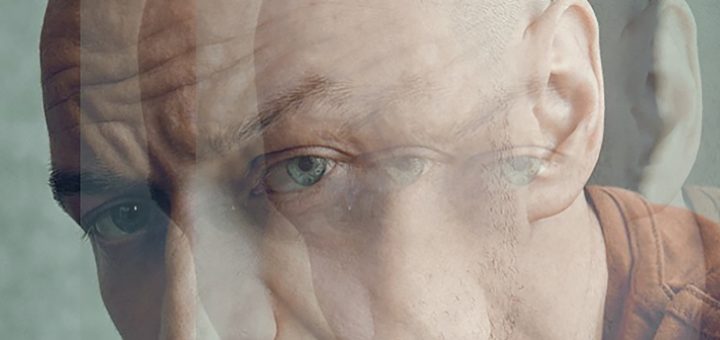What can Split help us understand about dissociative identity disorder?

By Karina Zapata, Arts Editor
Split, directed by the award-winning M. Night Shyamalan, came out in 2016 and was all the craze, enveloping the internet with countless memes involving Ms. Patricia acting as their drunk selves. However, anyone who watched the movie knows that Split was written entirely around the controversial mental disorder, dissociative identity disorder (DID), previously known as multiple personality disorder.
In the middle of January, Glass, a sequel to Split and Unbreakable starring Bruce Willis was released in Canada. The film occurs three weeks after the ending of Split when the Beast murdered the two young women Dennis kidnapped and was left in control of the Horde. In Glass, the three main characters — Kevin from Split, David from Unbreakable and Elijah, the mastermind with brittle bone disease — are put into a psychiatric research hospital to help scientists understand their gifts.
However, there has been plenty of backlash in regards to Shyamalan’s work with DID in Split. Many people, including experts, have said that Kevin’s experiences in the film aren’t representative of the disorder. Of course, the director of Split exaggerated the symptoms and signs of DID to unwavered lengths for dramatic effect. However, Split was likely the first time that many encountered the disorder and watched the impacts of it so closely. Because of this, the image that was put out into the world about DID is potentially dangerous.
But in light of recent events, like the release of Glass, it’s time to examine: what exactly did Shyamalan get right about DID in these films?
Quick Split recap
In case you don’t remember, let me break it down for you. In Split, the main character Kevin Wendell Crumb, had 23 other personalities. These other personalities were Barry (a fashionista who regularly visited a therapist), Dennis (the kidnapper), Ms. Patricia (an elderly lady who looks after all the personalities), Hedwig (a 9-year-old boy), Jade, Orwell, Heinrich, Samuel, Mary Reynolds, Ian, Norma, Mr. Pritchard, Luke, Goddard, Bernice, Polly, Rakel, Felinda, Ansel, Jalin, Kat, B.T. and last but not least, the Beast.
Altogether, the 24 personalities made the Horde.
In the film, Kevin’s “strongest” personality is the Beast. The Beast is a monster serial killer who is stronger than normal humans, climbs on walls and eats the flesh of young, impure girls. Throughout the entire film, you are able to see the Beast coming to life through the beliefs of the other personalities — Ms. Patricia speaks about him like a character in a fairytale and Dennis kidnaps the three girls to bring the Beast closer to the light.
What did Split get right about DID?
In Glass, the Beast mentions that he was created to protect Kevin. In the case of many people living with DID, this is true — their alternate selves (also named alters) are created to protect themselves from traumatic events or triggering experiences.
Like Kevin, this trauma often stems from their childhood. Kevin was physically abused by his mother which is when the dissociation emerged. Dissociation, or the state of being disconnected from body and mind, is something that most people experience on a day-to-day basis. For most people, this looks like daydreaming or letting your thoughts wander. But for people living with DID, dissociation is something else entirely.
In a 2009 study about DID, Paulette Marie Gillig states, “In general, practitioners who accept the validity of DID as a diagnosis attribute it to the effects of exposure to situations of extreme ambivalence and abuse in early childhood that are coped with by an elaborate form of denial so that the child believes the event to be happening to someone else (perhaps starting out as an imaginary companion).”
This is why most people living with DID have one or more child personalities.
When a person living with DID gets an alter to “take over” for them (or as stated in Split, “take the light” for them), the alter then holds the memory. This is depicted through the scene in Split in which Kevin’s therapist meets Dennis for the first time and, when asked about the childhood trauma that Kevin experienced, Dennis becomes defensive and emotional as if he experienced the abuse himself.
Shirley J. Davis, a blogger who writes about her experiences with DID, said in a blog post that she has hundreds of six-year-old child alters but a three-year-old child alter named Mary Ellen sticks out to her the most.
She explains, “Child alters are you formed and trapped at different ages in trauma-time (the actual time that a traumatic event occurred.) For instance, Mary Ellen developed when I was around three and holds all the memories of traumatic events that happened at that time in life.”
Change in body chemistry
Another interesting thing about DID that Split got right was the changes in body chemistry between the alters. One of Kevin’s personalities, Jade, has diabetes when none of the other alters or even Kevin himself has diabetes. Jade takes insulin to keep her blood sugar levels steady — Kevin does not.
This is something that has been spoken about for years. In 1985, Daniel Goleman with the New York Times wrote about a man named John who had DID, at the time called multiple personality disorder. Goleman focused on the changes in body chemistry between the alters, bringing in Dr. Bennett Braun, former director of a unit treating multiple personality disorder in Chicago.
Braun spoke about different cases with his patients living with what is now DID. One of his patients had a personality who was colourblind for blue and green and, with proper treatment, eventually was no longer colourblind. Another patient had some personalities that were allergic to citrus while his other personalities were not.
‘’Some multiples carry several different eyeglasses, because their vision changes with each personality,’’ added Braun.
Of course in Split, the Beast’s superhuman strength and bulletproof skin is a play on the riveting aspect of this disorder. It shows how people living with DID can change their body chemistry to what they believe in and what helps manage their trauma.
However, if there’s one thing to remember, it’s that Split is an unrealistic take on DID. People living with DID are normal human beings whose brains took severe and repeated trauma and turned it into ways to survive through dissociation; they are not monsters.




